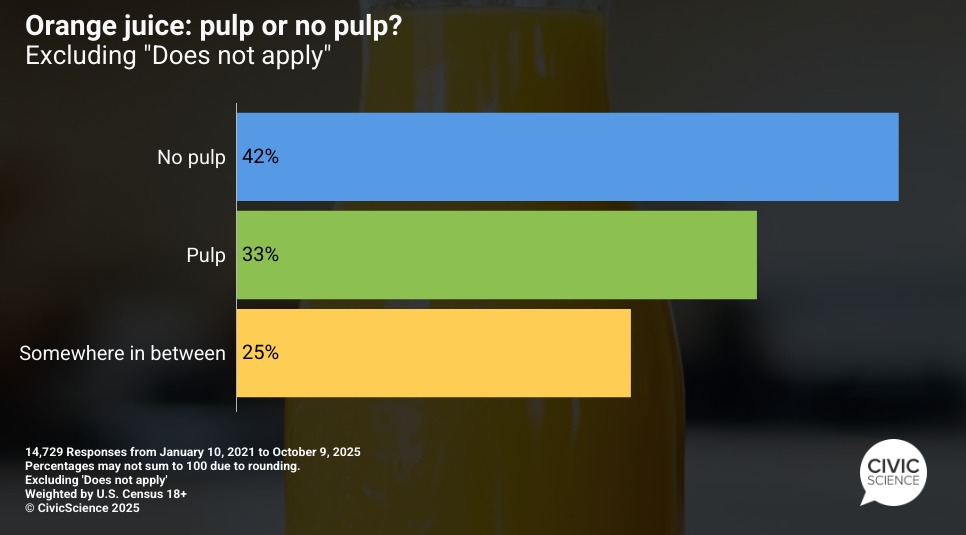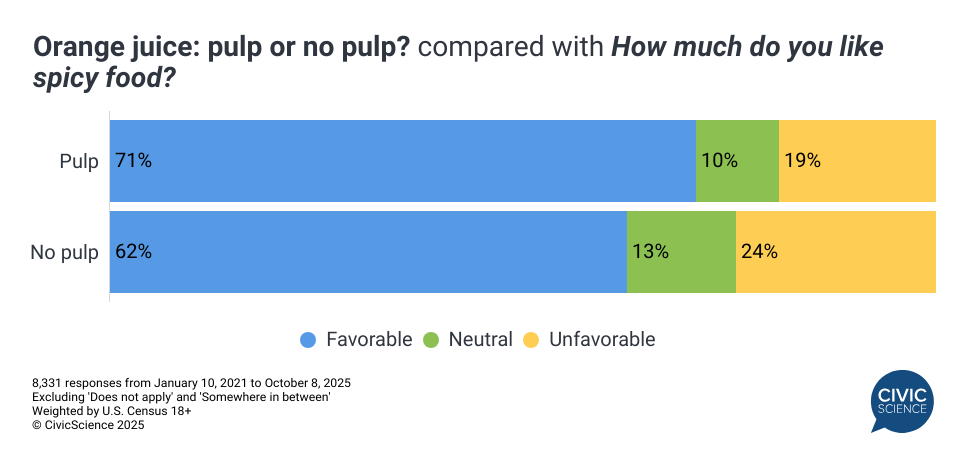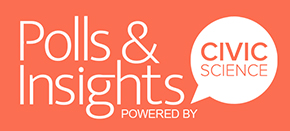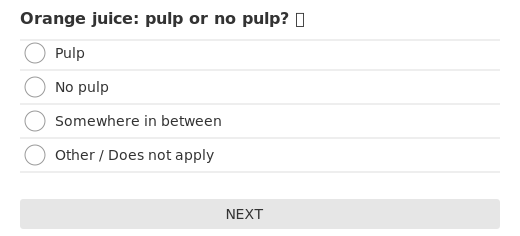When it comes to orange juice preference, Americans are split, but decisive: 42% prefer no pulp, 33% want pulp, and 25% land somewhere in between. This textured debate reveals unexpected patterns about adventure, fitness, and even reading habits that suggest pulp preference might be a personality test in a glass.

A look at the demographic breakdowns finds seniors 65+ are the most pro-pulp at 38%, while young adults 18-29 are most pulp-averse with 43% choosing pulp-free. The 30-44 group shows the strongest middle ground at 29% “somewhere in between.” Women lean significantly more anti-pulp than men (49% vs 37%), while men are more likely to embrace full pulp (31% vs 25%). Regionally, the Northeast stands out as the smooth juice capital with 53% preferring no pulp, while the West shows the highest pulp enthusiasm at 39%.
Seniors 65+ are the most pro-pulp at 38%, while young adults 18-29 are most pulp-averse with 43% choosing smooth. The 30-44 group shows the strongest middle ground at 29% “somewhere in between.” Women lean significantly more anti-pulp than men (49% vs 37%), while men are more likely to embrace full pulp (31% vs 25%). Regionally, the Northeast stands out as the smooth juice capital with 53% preferring no pulp, while the West shows the highest pulp enthusiasm at 39%.
Among those with clear preferences (excluding the middle ground), pulp lovers are notably more adventurous eaters. A full 43% say they seek out new foods more than others, compared to just 36% of no-pulp drinkers. This seven-point gap suggests texture tolerance in orange juice might predict broader culinary courage.
The fitness connection proves even more striking. Among runners and joggers, pulp enthusiasts exercise far more intensively—30% run daily compared to just 19% of smooth juice fans. Meanwhile, no-pulp preferences correlate with less frequent exercise, with 33% running multiple times weekly versus pulp lovers’ 35%. The most dedicated athletes apparently embrace the chunks.
Pulp fans also show distinct media preferences. They’re significantly less interested in sports (45% say it’s not important vs 38% of no-pulp drinkers), yet they’re more likely to prefer physical books—34% choose new printed books compared to 31% of smooth juice lovers. No-pulp drinkers lean slightly more toward used books and digital formats, suggesting different relationships with tactile experiences.
The spice tolerance data adds another layer: pulp lovers overwhelmingly embrace spicy food at 71% favorable versus no-pulp drinkers’ 62%. This nine-point gap reinforces the pattern—those who tolerate orange juice texture seek intensity in other foods too.

Together, these patterns suggest that pulp lovers often lean toward sensory and experiential engagement—seeking texture, flavor, and physical activity with gusto. No-pulp drinkers, meanwhile, appear to value smoothness and simplicity, favoring more streamlined, digital, or controlled experiences. In the great pulp debate, we’re not just choosing orange juice consistency—we’re revealing how much texture, challenge, and intensity we want from life itself.
Love taking polls? Sign up to participate in the Poll of the Day here.
This article’s data comes solely from CivicScience’s database, which contains nearly 700,000 poll questions and 5 billion consumer insights.


